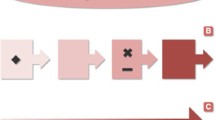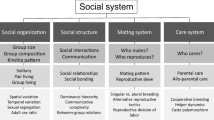Abstract
Leo Pardi (1915–1990) was the initiator of ethological research in Italy. During more than 50 years of active scientific career, he gave groundbreaking contributions to the understanding of social life in insects, especially in Polistes wasps, an important model organism in sociobiology. In the 1940s, Pardi showed that Polistes societies are organized in a linear social hierarchy that relies on reproductive dominance and on the physiological and developmental mechanisms that regulate it, i.e. on the status of ovarian development of single wasps. Pardi’s work set the stage for further research on the regulatory mechanisms governing social life in primitively eusocial organisms both in wasps and in other insect species. This article reconstructs Pardi’s investigative pathway between 1937 and 1952 in the context of European ethology and American animal sociology. This reconstruction focuses on the development of Pardi’s physiological approach and presents a new perspective on the interacting development of these two fields at the origins of our current understanding of animal social behavior.
Similar content being viewed by others
References
Allee, Warder C. 1931. Animal Aggregations: A Study in General Sociology. Chicago: University of Chicago Press.
Allee, Warder C. 1952. “Dominance and Hierarchy in Societies of Vertebrates.” Structure et Physiologie des Sociétés Animales (CNRS), vol. 34. Paris: Coll. Int., pp. 157–181.
Allee, Warder C. and Collias, Nicholas E. 1940. “The Influence of Estradiol on the Social Organization of Flocks of Hens.” Endocrinology 27(1): 87–94.
Allee, Warder C., Collias, Nicholas E., and Lutherman, C.Z. 1939. “Modification of the Social Order in Flocks of Hens by the Injection of Testosterone Propionate.” Physiological Zoology 12(4): 412–440.
Burkhardt, Richard W. 1994. “Animal Behavior and French Biology.” C. Debru, J. Gayon, and J.F. Picard (eds), Les sciences biologiques et médicales en France, 1920–1950. Paris: CNRS éditions, pp. 99–111.
Burkhardt, Richard W. 2005. Patterns of behavior: Konrad Lorenz, Niko Tinbergen, and the Founding of Ethology. Chicago: University of Chicago Press.
Chavot, Philippe. 1994. Histoire de l’éthologie. Recherches sur le développement des sciences du comportement en Allemagne, Grande-Bretagne et France, de 1930 à nos jours. Doctoral Dissertation, Université Louis Pasteur-Strasbourg I.
Deleurance, Édouard-Philippe. 1946. “Une rÉgulation sociale à base sensorielle pÉriphÉrique: l’inhibition de la ponte des ouvrières par la prÉsence de la fondatrice chez les Polistes (HymÉnoptères - Vespidae).” Comptes rendus hebdomadaires des sÉances de l’acadÉmie des sciences 223(21): 871–872.
Deleurance, Édouard-Philippe. 1948. “Le comportement reproducteur est indépendant de la présence des ovaires chez polistes (Hyménoptères -Vespides).” Comptes rendus hebdomadaires des séances de l’académie des sciences 227(17): 866–867.
Deleurance, Édouard-Philippe. 1949. “Sur le déterminisme de l’apparition des ouvrières et des fondatrices-filles chez les Polistes (Hyménoptères - Vespidae).” Comptes rendus hebdomadaires des séances de l’académie des sciences 229(4): 303–304.
Deleurance, Édouard-Philippe. 1950. “Sur le mécanisme de la monogynie fonctionnelle chez les Polistes (Hyménoptères - Vespides).” Comptes rendus hebdomadaires des séances de l’académie des sciences 230(8): 782–784.
Deleurance, Édouard-Philippe. 1952a. “Étude du cycle biologique du couvain chez Polistes: Les phases ‘couvain normal’ et ‘couvain abortif’.” Behaviour 4: 104–115.
Deleurance, Édouard-Philippe. 1952b. “Le polymorphisme social et son determinisme chez les guepes.” Structure et Physiologie des Sociétés Animales (CNRS), vol. 34. Paris: Coll. Int, pp. 141–155.
Deleurance, Édouard-Philippe. 1955. “Contribution a l’étude biologique des polistes (Hyménoptères Vespides) II. Le Cycle évolutif du couvain.” Insectes Sociaux 2(4): 285–302.
Freud, Sigmund. 1977. Five Lectures on Psycho-Analysis. New York: WW Norton & Company.
Granata, Leopoldo. 1925. “Sulla struttura dei corpi grassi degli Anfibi.” Monitore zoologico italiano XXXVI: 35–40.
Hamilton, William D. 1964. “The Genetical Evolution of Social Behaviour II.” Journal of Theoretical Biology 7: 17–52.
Heldmann, Georg. 1936. “Über das Leben auf Waben mit mehreren Überwinterten Weibchen von Polistes gallica L.” Biologische Zentralblatt 56: 389–400.
Heinroth, O. 1911. Beiträge zur Biologie, namenthlich Ethologie und Psychologie der Anatiden Verhandlungen des V International Ornithologisches Kongress. Berlin 1910, pp. 589–702
Hölldobler, B. and Wilson, E. O. 2009. The superorganism: the beauty, elegance, and strangeness of insect societies. WW Norton & Company
Holmes, F.L. 2004. Investigative Pathways: Patterns and Stages in the Careers of Experimental Scientists. New Haven: Yale University Press.
Jandt, J.M., Tibbetts, E.A., and Toth, A.L. 2014. “Polistes Paper Wasps: A Model Genus for the Study of Social Dominance Hierarchies.” Insectes Sociaux 61(1): 11–27.
Maienschein, Jane. 1988. “Whitman at Chicago: Establishing a Chicago Style of Biology?’ Ronald Rainger, Keith R. Benson and Jane Maienschein (eds), The American Development of Biology. Philadelphia: University of Pennsylvania Press, pp. 151–182.
Marchal, P. 1896. “La reproduction et l’évolution des guêpes sociales.” Archives de zoologie expérimentale et générale 4: 1–100.
Marino Piccioli, Maria Teresa and Pardi, Leo. 1970a. Studi sulla biologia di belonogaster (Hymenoptera, Vespidae) 1. Sull’etogramma di belonogaster griseus. Monitore Zoologico Italiano. Supplemento, 3(1):197–225
Marino Piccioli, Maria Teresa and Pardi, Leo. 1970b. Studi sulla biologia di belonogaster (Hymenoptera, Vespidae) 2. Differenziamento castale incipiente in b. griseus (fab). Monitore Zoologico Italiano. Supplemento 3(1): 235–265.
Mitman, Gregg. 1992. The State of Nature: Ecology, Community, and American Social Thought, 1900–1950. Chicago: University of Chicago Press.
Mitman, Gregg and Burkhardt, Jr., Richard W. 1991. “Struggling for Identity: The Study of Animal Behavior in America, 1930–1945.” Keith R. Benson and Jane Maienschein (eds), The Expansion of American Biology. Philadelphia: University of Pennsylvania, pp. 164–194.
Niceforo, Alfredo. 1919. La misura della vita: Applicazioni del metodo statistico alle scienze naturali, alle scienze sociali, e all’arte… No. 73. fratelli Bocca.
Niceforo, Alfredo. 1923. Il metodo statistico. Milan: Casa editrice Giuseppe Principato.
Niceforo, Alfredo. 1935. Attrazione repulsione c circolazione nella vita sociale. Bologna: Riuniti.
Papi, Floriano. 1991. “Leo Pardi (1915–1990).” Tropical Zoology 4(1): 153–156.
Pardi, Leo. 1936a. “Osservazioni sul comportamento del condrioma nella spermatogenesis di Euscorpius carpathicus L.” Processi verbali Società Toscana di Scienze Naturali 45: 6–15.
Pardi, Leo. 1936b. “Sul mesointestino degli Scorpioni.” Memorie Società Toscana di Scienze Naturali 44: 67–70.
Pardi, Leo. 1937. “Sull’origine del glicogeno nei corpi grassi durante la ninfosi di Polistes gallicus L. (Hymenoptera-vespidae).” Monitore zoologico Italiano 48: 276–278.
Pardi, Leo. 1938. “Origine e comportamento del glicogeno nei corpi grassi di Polistes gallicus L. (Hymenoptera-Vespidae).” Archivio Italiano di Anatomia e di Embriologia 40: 281–300.
Pardi, Leo. 1939. “I corpi grassi degli insetti.” Redia 25: 87–288.
Pardi, Leo. 1940. “Poliginia vera ed apparente in Polistes gallicus L.” Processi verbali Società Toscana di Scienze Naturali 49: 64–70.
Pardi, Leo. 1941. “Ancora sulla poliginia iniziale di Polistes gallicus (L.) e sul comportamento delle femmine associate fino alla schiusa delle prime operaie.” Processi verbali Società Toscana di Scienze Naturali 50: 61–73.
Pardi, Leo. 1942. “Ricerche sui Polistini V. La poliginia iniziale di Polistes gallicus (L.).” Bollettino Istituto di Entomologia Università di Bologna 14: 1–106.
Pardi, Leo. 1945. “Sul comportamento sessuale dei Primati sub-umani.” Psicoanalisi 1: 40–56.
Pardi, Leo. 1946a. “La ‘Dominazione’e il Ciclo Ovario Annuale in Polistes Gallicus (L.). Ricerche sui Polistini VII.” Bollettino Istituto di Entomologia Università di Bologna 15: 25–84.
Pardi, Leo. 1946b. “Sui fenomeni di dominazione nelle societá degli animali.” Historia Naturalis, Roma 1: 9–16.
Pardi, Leo. 1946c. “La psicoanalisi e lo studio di alcuni comportamenti animali.” Psicoanalisi 1: 40–56.
Pardi, Leo. 1947. “Beobachtungen über das interindividuelle Verhalten bei Polistes gallicus (Untersuchungen über die polistini, no. 10).” Behaviour 1: 138–172.
Pardi, Leo. 1948. “Dominance Order in Polistes Wasps.” Physiological Zoology 21: 1–13.
Pardi, Leo. 1951. “Studio dell’attività e della divisione di lavoro in una società di Polistes gallicus (L.) dopo la comparsa delle operaie. Ricerche sui Polistini XII.” Archivio Zoologico Italiano 36: 361–431.
Pardi, Leo. 1952. “Dominazione e gerarchia in alcuni Invertebrati.” Structure et Physiologie des Sociétés Animales (CNRS), vol. 34. Paris: Coll. Int., pp. 157–181.
Pardi, Leo. 1972. Etologia. Milan: Enciclopedi della Scienza e della Tecnica. A. Mondadori, pp. 625–630.
Pardi, Leo. 1996. “Polistes: Analysis of a Society.” S. Turillazzi and M.J. West-Eberhard (eds), Natural History and Evolution of Paper Wasps. Oxford: Oxford University Press, pp. 1–17.
Pardi, Leo. 1983. Karl von Frisch: il dialogo oltre il confine della specie. Atti Accademia Nazionale di Entomologia Anno XXXI. Printed again in L’apicoltore Moderno 74: 213–220.
Pardi, Leo, Cavalcanti, M. 1951. “Esperienze sul meccanismo della monoginia funzionale in Polistes gallicus (L.) (Hymenoptera-Vespidae).” Bollettino di Zoologia 18: 247–252.
Pardi, Leo and Papi, Floriano. 1952. “Die Sonne als Kompass bei Talitrus saltator (ontagu).” Naturwissenschaften 39: 262–263.
Rau, P. 1938. “Studies in the Ecology and Behavior of Polistes Wasps.” Bull. Brooklyn entomological Society 33(5): 224–235.
Rau, P. 1939. “The Instinct of Animosity and Tolerance in Queen Polistes Wasps.” Journal of Comparative Psychology 27: 259–269.
Richards, O.W. 1971. “The Biology of the Social Wasps (Hymenoptera, Vespidae).” Biological Reviews 46(4): 483–528.
Röseler, P.-F. 1985. “Endocrine Basis of Dominance and Reproduction in Polistine Paper Wasps.” Fortschritte der Zoologie 31: 259–272.
Röseler, P.-F., Röseler, I., and Alain, Strambi. 1985. “Role of Ovaries and Ecdysteroids in Dominance Hierarchy Establishment Among Foundresses of the Primitively Social Wasp, Polistes gallicus.” Behavioral Ecology and Sociobiology 18: 9–13.
Röseler, P.-F., Röseler, I., Strambi, A., and Augier, R. 1984. “Influence of Insect Hormones on the Establishment of Dominance Hierarchies Among Foundresses of the Paper Wasp Polistes gallicus.” Behavioral Ecology and Sociobiology 15: 133–142.
Röseler, P.F., Röseler, I., and Strambi, A. 1986. “Studies of the Dominance Hierarchy in the Paper Wasp, Polistes gallicus (L.) (Hymenoptera Vespidae).” Monitore Zoologico Italiano 20(3): 283–290.
Roubaud, Emile. 1916. Recherches biologiques sur les guêpes solitaires et sociales d’Afrique: la genèse de la vie sociale et l’évolution de l’instinct maternel chez les vespides. Masson et cie.
Schjelderup-Ebbe, Thorleif. 1922. “Beiträge zur sozialpsychologie des haushuhns.” Zeitschrift für Psychologie 88: 222–225.
Sleigh, C. 2007. Six Legs Better: A Cultural History of Myrmecology. Baltimore: Johns Hopkins University Press.
Turillazzi, Stefano and Pardi, Leo. 1977. “Body Size and Hierarchy in Polygynic Nests of Polistes gallicus (L.) (Hymenoptera Vespidae). Monitore Zoologico Italiano-Italian.” Journal of Zoology 11(1–2): 101–112.
Turillazzi, Stefano and Pardi, Leo. 1982. “Social Behavior of Parischnogaster nigricans serrei (Hymenoptera: Vespoidea) in Java.” Annals of the Entomological Society of America 75(6): 657–664.
Turillazzi, S. (1996). “Polistes in Perspective: Comparative Social Biology in Belonogaster and Stenogastrinae.” Natural History and Evolution of Paper-Wasps. Oxford: Oxford Science, pp. 235–248.
von Frisch, Karl. 1942. “Die Werbetänze der Bienen und ihre Auslösung.” Naturwissenschaften 30(19): 269–277.
West-Eberhard, Mary Jane. 1969. The Social Biology of Polistine Wasps. Ann Arbor:Miscellaneous Publications Museum of Zoology, University of Michigan.
West-Eberhard, Mary Jane. 1978. “Polygyny and the Evolution of Social Behavior in Wasps.” Journal of the Kansas Entomological Society 51(4): 832–856.
West-Eberhard, Mary Jane. 1996. “Wasp Societies as Microcosms for the Study of Development and Evolution.” Natural History and Evolution of Paper-Wasps. Oxford: Oxford Science, p. 290.
Wilson, E. O. 1971. The insect societies. Harvard University Press
Author information
Authors and Affiliations
Corresponding author
Rights and permissions
About this article
Cite this article
Caniglia, G. Understanding Societies from Inside the Organisms. Leo Pardi’s Work on Social Dominance in Polistes Wasps (1937–1952). J Hist Biol 48, 455–486 (2015). https://doi.org/10.1007/s10739-015-9401-z
Published:
Issue Date:
DOI: https://doi.org/10.1007/s10739-015-9401-z




